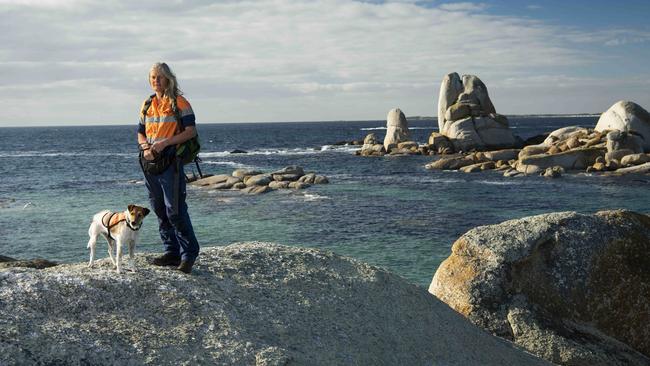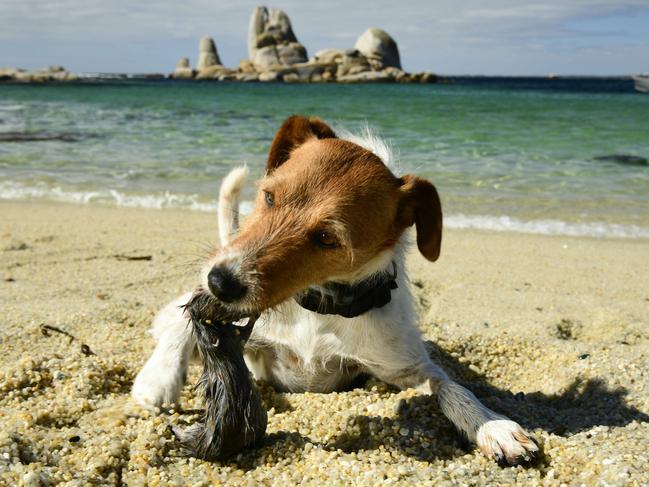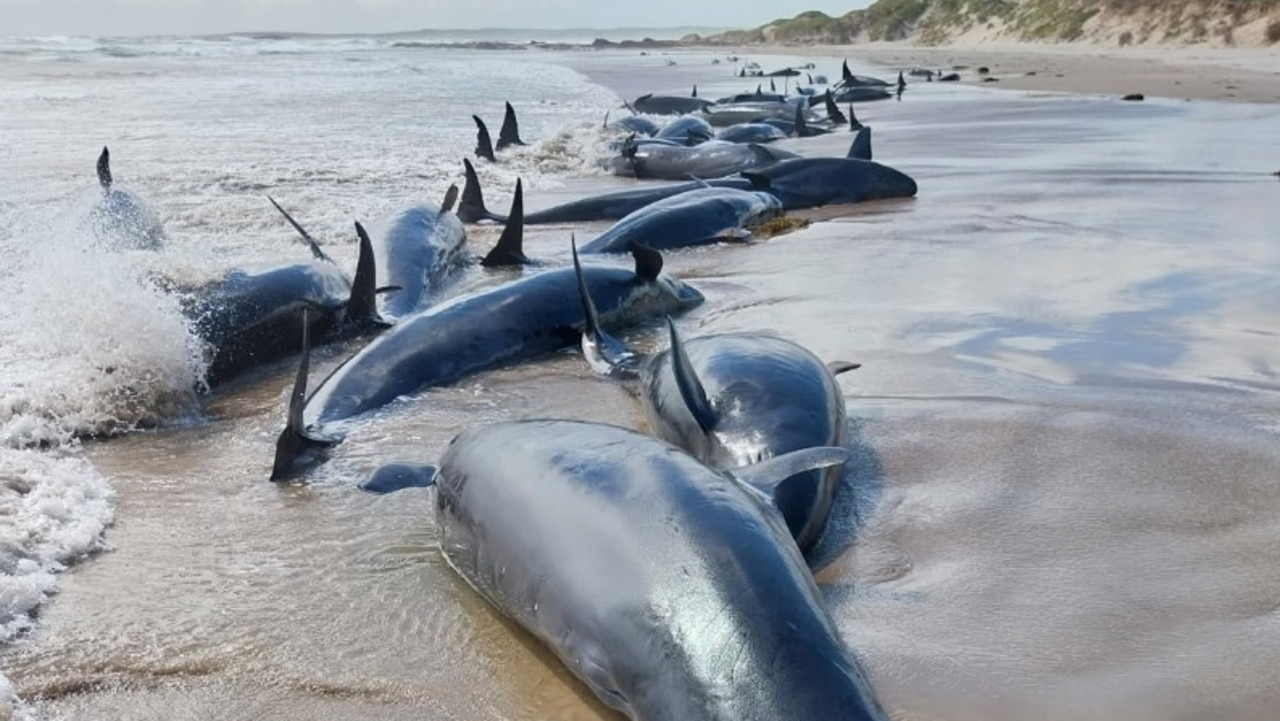Star rat-catchers hound bird-eating pests off remote island of George Rocks
On a remote speck of granite surrounded by shipwreck seas, a small group of people, a little cash and a tiny dog have scored a big environmental gain.

On a remote speck of granite surrounded by shipwreck seas, a realisation is dawning. “It can’t be true, can it? They are gone!” declares wildlife biologist Mark Holdsworth.
“They” are hundreds of black rats, which have long overrun several islets that help constitute the 7ha of George Rocks, off Tasmania’s remote northeast.
The wily rodents, thought to have arrived via shipwreck or a visiting boat, wiped out breeding colonies of seabirds, such as white-faced storm petrels and common diving petrels.
But in less than a year, two hands-on scientists, a philanthropist, 19 volunteers, and a well-trained pooch have turned the tables on the interlopers.

This week, a search by rat-detecting terrier Nui — as well as checks of sensing cameras, traps and lard-laced “chew cards” irresistible to rats — all showed no sign of the pests.
The last of 198 rats, which ate the petrels’ chicks and eggs, was found dead on July 6. “We believe it’s now rat-free — our confidence is very high that there are unlikely to be rats here now,” explains Mr Holdsworth, the project manager.
Adding to the joy, one of the cameras collected this week revealed a glimpse of a white-faced storm petrel. “It’s a good sign the species may be recolonising now rats have been removed,” he said.
The $15,000 project is the latest in a series of successful island pest eradications in recent years. Some, such as this, have been relatively small; others large and complex, such as on sub-Antarctic Macquarie Island and NSW’s Lord Howe Island.
Chief funder of the George Rocks rat eradication, tourism operator Rob Pennicott, said it showed how a little money, backed by dedicated expertise and volunteers, could achieve big outcomes. “These are real projects with real outcomes, and for the amount of money, compared to the significance of the outcomes, it’s really well spent,” Mr Pennicott said.
Tasmania’s Parks and Wildlife Service provided planning support, while Biosecurity Tasmania allowed the paid involvement of its experienced island pest-buster Sue Robinson, Nui’s owner.
The state this week also committed $10,000 to eradicate another pest on George Rocks: the aggressive mirror bush, which chokes seabirds’ burrows.
Dr Robinson said the weed-busting program would allow her and Nui to continue a watchful brief on the rats.
“We need to continue to monitor — we don’t want rats coming back,” she said.



